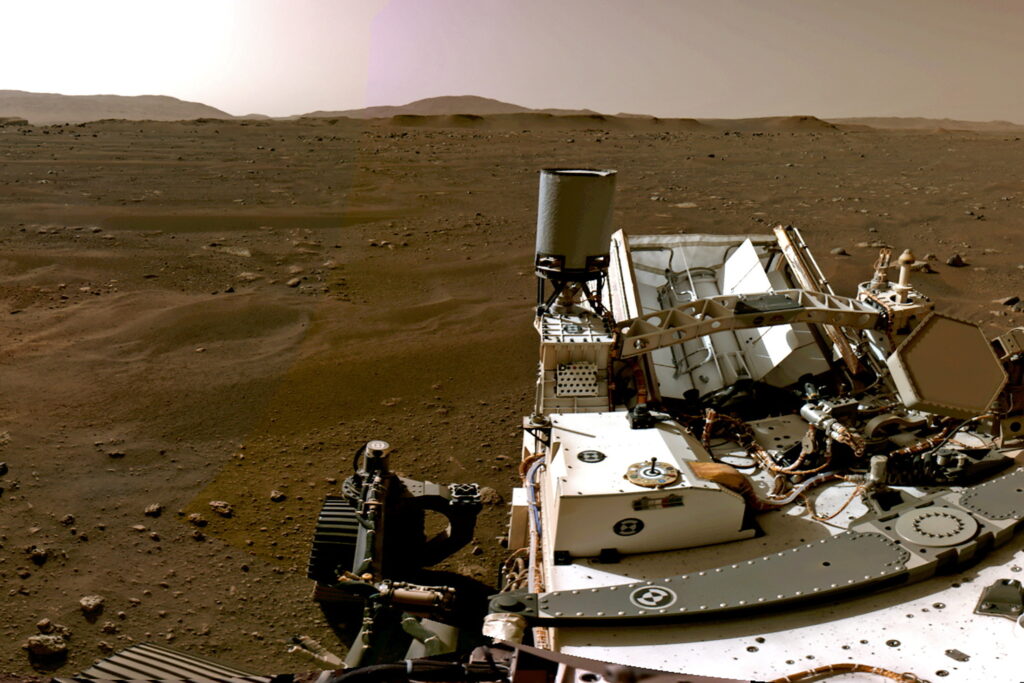Ever wondered what’s out there on Mars? NASA’s Mars rovers are like our eyes on the Red Planet, unveiling secrets that have intrigued humanity for centuries.
Buckle up, because we’re about to embark on a journey through the latest discoveries made by these incredible machines.

NASA’s Mars Rovers: Pioneers of Exploration
Before we dive into the discoveries, let’s take a moment to appreciate the technology.
NASA’s Mars rovers, including Perseverance and Curiosity, are more than just robots; they’re pioneers.
These rovers are equipped with cutting-edge instruments designed to analyze the Martian surface, atmosphere, and geology.
The Perseverance Rover: A New Era of Exploration
Perseverance, launched in July 2020, is the latest addition to NASA’s Mars exploration program.
This rover is on a mission to search for signs of ancient life and collect samples for future return to Earth.
It’s like sending a scientist to Mars!
The Landing Site: Jezero Crater
Perseverance landed in Jezero Crater, a location chosen for its potential to have once hosted life.
Imagine a crater that was once a lake, filled with water and possibly teeming with microbial life.
This site offers a rich history preserved in its rocks.
The Ingenuity Helicopter: A Mars First
One of Perseverance’s coolest companions is the Ingenuity helicopter.
This little drone made history with the first powered flight on another planet.
It’s like having a bird’s-eye view of Mars, allowing scientists to scout areas of interest from above.
Curiosity Rover: The Veteran Explorer
Curiosity, launched in 2011, has been exploring Mars for over a decade.
It’s like the wise elder of the Mars rovers, with a wealth of discoveries under its belt.
Gale Crater: Curiosity’s Home
Curiosity’s mission revolves around Gale Crater, another ancient lakebed.
This site has revealed clues about Mars’ wet past, providing evidence that the planet once had conditions suitable for life.
Major Discoveries by Perseverance
Let’s dive into some of the fascinating discoveries made by Perseverance.
Ancient Microbial Life
Perseverance has found promising signs that Mars could have supported ancient microbial life.
Imagine finding fossilized remains of tiny organisms – that’s what scientists are hoping for!
Organic Molecules
One of the most exciting finds is the detection of organic molecules in Martian rocks.
These molecules are the building blocks of life, hinting that Mars may have been more hospitable in the past.
Water Traces
Water is crucial for life as we know it, and Perseverance has discovered minerals that form in the presence of water.
These findings suggest that Mars had liquid water on its surface billions of years ago.

Curiosity’s Groundbreaking Findings
Curiosity has also made significant contributions to our understanding of Mars.
Methane Spikes
Curiosity has detected mysterious spikes in methane levels.
On Earth, methane is often produced by living organisms.
Could this mean there’s still some form of life on Mars?
Radiation Levels
Understanding radiation on Mars is vital for future human missions.
Curiosity has provided detailed data on the radiation environment, helping scientists plan for safer manned missions.
Sedimentary Layers
Curiosity has explored sedimentary rock layers, which act like pages in a history book.
These layers reveal the environmental changes Mars has undergone over millions of years.
Technological Marvels: How Rovers Explore Mars
Advanced Instruments
Both Perseverance and Curiosity are equipped with a suite of advanced instruments.
From cameras that capture stunning images to spectrometers that analyze rock composition, these tools are crucial for unraveling Mars’ mysteries.
Autonomous Navigation
Imagine driving a car on Mars – it’s not easy! These rovers can navigate the rugged Martian terrain autonomously, using AI to make decisions in real-time.
Sample Collection
Perseverance is on a mission to collect samples that will be returned to Earth.
These samples will undergo detailed analysis in laboratories, providing insights that are impossible to obtain remotely.
The Significance of Mars Exploration
Understanding Planetary Evolution
Studying Mars helps us understand the evolution of planets, including our own Earth.
It’s like looking into a mirror and seeing a younger version of ourselves.
Preparing for Human Missions
The data collected by these rovers is crucial for planning future human missions to Mars.
From understanding radiation levels to finding potential water sources, every discovery brings us closer to setting foot on the Red Planet.
Inspiring Future Generations
The excitement surrounding Mars exploration inspires young minds to pursue careers in science and engineering.
Who knows, the next great Mars explorer could be reading this right now!
Conclusion: The Journey Continues
NASA’s Mars rovers have transformed our understanding of the Red Planet.
With each discovery, we get closer to answering the age-old question: Are we alone in the universe? As we continue to explore, one thing is certain – the journey is far from over.
So, keep your eyes on the stars and your heart full of curiosity, because the next big discovery could be just around the corner.

FAQs
Q1: How long do Mars rovers typically last?
Mars rovers are designed to last for several years.
For example, Curiosity has been exploring Mars since 2012 and is still operational.
Q2: What happens to the rovers after their missions end?
Once their missions end, the rovers remain on Mars.
They continue to send data until their systems fail or they lose contact with Earth.
Q3: Can rovers be controlled in real-time from Earth?
No, there is a delay in communication between Earth and Mars, so rovers operate autonomously using pre-programmed instructions and AI.
Q4: How do rovers send data back to Earth?
Rovers use high-gain antennas to send data to orbiters around Mars, which then relay the information back to Earth.
Q5: What’s next for Mars exploration?
NASA plans to send humans to Mars in the 2030s. The data from rovers will play a crucial role in preparing for these manned missions.
